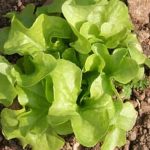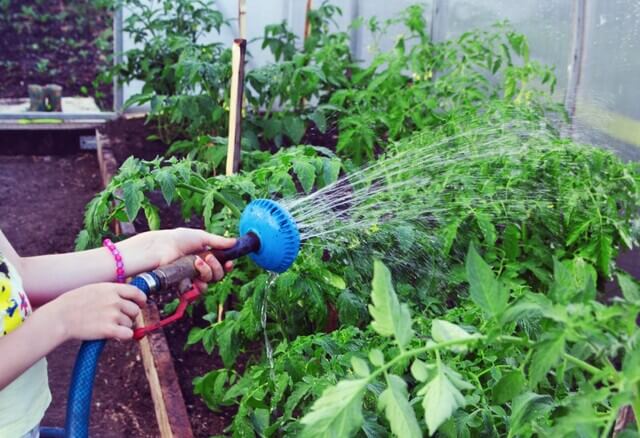Gardening with vegetables is not only a fantastic hobby but also an incredibly rewarding and enjoyable experience. Whether you are a beginner or an experienced gardener, growing your own vegetables offers numerous benefits that extend beyond delicious and nutritious homegrown produce. In this article, we will explore the basics of gardening with vegetables and provide you with the knowledge and tips to get started on your own vegetable garden.
One of the major benefits of gardening with vegetables is its positive impact on your physical and mental health. Engaging in gardening activities helps reduce stress levels, improve mood, and increase physical activity through tasks such as digging, planting, and weeding.
Furthermore, consuming fresh homegrown vegetables contributes to a well-balanced diet that is rich in nutrients. Not only do you have control over what pesticides or fertilizers are used, but you also have the opportunity to enjoy a wider variety of vegetable choices that may not be available at local grocery stores.
Gardening with vegetables is not just good for your personal well-being; it is also beneficial for the environment. By growing your own food, you can reduce your carbon footprint and contribute to sustainability efforts. Your vegetable garden eliminates the need for transportation-related emissions in terms of food miles since everything grows right in your backyard. Additionally, practicing organic gardening methods supports biodiversity by avoiding harmful chemicals that could harm beneficial insects and organisms.
Now that you understand the wonderful benefits of gardening with vegetables let’s move on to exploring how to choose the perfect spot for your vegetable garden. Remembering to consider factors such as sunlight exposure, soil quality, and available space will ensure that your plants receive optimal conditions for growth and development.
Benefits of Gardening with Vegetables
Gardening with vegetables offers a multitude of benefits, not only for individuals but also for the environment. Beyond the enjoyment and sense of accomplishment that comes from growing your own food, there are significant physical and mental health advantages to be gained. Additionally, cultivating a vegetable garden contributes to sustainability efforts, reduces food miles, and has a positive impact on the environment.
One of the primary benefits of gardening with vegetables is its positive effect on physical health. Tending to a garden requires physical activity such as digging, planting, weeding, and harvesting. These activities provide an opportunity for individuals to engage in low-impact exercise and improve muscle strength, flexibility, and stamina. Gardening can be particularly beneficial for older adults or those with limited mobility, as it provides an accessible form of exercise.
In addition to physical benefits, gardening with vegetables has been shown to have a positive impact on mental health and well-being. Spending time outdoors surrounded by nature has been linked to reduced stress levels and improved mood. Gardening also promotes mindfulness and can serve as a form of therapy or relaxation. Furthermore, seeing plants grow from seeds to fully-fledged vegetables can boost self-esteem and provide a sense of accomplishment.
Environmental sustainability is another advantage of vegetable gardening. By growing your own produce, you reduce your reliance on commercially-grown vegetables that often require large amounts of water and pesticides. Additionally, home gardens allow you to control the use of chemicals or choose organic methods instead. Growing your own food also reduces food miles – the distance food travels from farm to plate – thereby decreasing carbon emissions associated with transportation.
| Benefit | Description |
|---|---|
| Physical Health Improvement | Gardening provides low-impact exercise opportunities that improve muscle strength, flexibility, and stamina. |
| Mental Health Enhancement | Spending time outdoors gardening has been linked to reduced stress levels and improved mood, while witnessing the growth of plants can boost self-esteem. |
| Environmental Sustainability | Growing your own produce reduces reliance on commercially-grown vegetables, decreases the use of water and pesticides, and lowers food miles. |
Choosing the Perfect Spot
Choosing the right location for your vegetable garden is essential for the success of your plants. When selecting a spot, there are a few key factors to consider: sunlight exposure, soil quality, and available space.
Firstly, sunlight exposure is crucial for the growth and development of your vegetables. Most vegetables need at least 6-8 hours of direct sunlight each day, although some leafy greens can tolerate partial shade. Observe your yard throughout the day to determine which areas receive the most consistent sunlight. Avoid placing your vegetable garden in areas that are shaded by trees or buildings for long periods.
Secondly, soil quality plays a significant role in the health of your plants. Conduct a soil test to assess its fertility and pH levels. Most vegetables prefer a pH range between 6 and 7. If the soil pH is too high or too low, you can amend it with additives such as lime or sulfur. Additionally, ensure that the soil drains well to prevent waterlogging, as excess moisture can lead to root rot and other problems.
Lastly, consider the available space in your chosen spot. Vegetables need enough room to grow without being overcrowded. Each plant has different spacing requirements, so consult seed packets or gardening resources for specific information on how much space each vegetable needs between plants.
By carefully considering these factors – sunlight exposure, soil quality, and available space – you can choose the perfect spot for your vegetable garden. This will create an optimal environment for your plants to thrive and produce a bountiful harvest.
Preparing the Soil
Before you start planting your vegetable garden, it is crucial to prepare the soil properly. The quality of your soil plays a significant role in the growth and health of your plants. By taking the time to prepare your soil, you can create an optimal environment for your vegetables to thrive and produce a bountiful harvest. Here are some important steps to consider when preparing your soil:
- Test and amend the soil: Conducting a soil test is essential to assess the pH level and nutrient content of your soil. This information will help you determine what amendments, such as lime or organic matter, are needed to improve its quality. You can find at-home soil testing kits or send a sample to a local extension office for analysis.
- Clear and remove debris: Remove any rocks, weeds, or debris from the planting area before working on the soil. These unwanted materials can hinder plant growth or serve as hiding places for pests.
- Loosen compacted soil: If your soil is compacted, it can impede root development and water absorption. To improve drainage and create space for roots to grow, use a garden fork or tiller to loosen the compacted areas.
- Add organic matter: Incorporating organic matter into your soil is vital for its fertility and structure. Compost, well-rotted manure, or leaf mold are excellent choices that provide essential nutrients while enhancing moisture retention capabilities.
- Mulch: After preparing the planting beds, apply a layer of mulch around your vegetable plants. Mulch helps suppress weeds, conserve moisture, regulate soil temperature, and prevent erosion.
Remember that different vegetables have varying preferences when it comes to soil texture and fertility levels. Research specific requirements for each type of vegetable you plan on growing in order to tailor your preparations accordingly.
By giving careful attention to preparing your soil before planting, you are setting the stage for a successful vegetable garden. The improved soil quality will contribute to healthier plants, better yields, and an overall more enjoyable gardening experience.
Essential Tools and Supplies
When it comes to gardening with vegetables, having the right tools and supplies is essential for success. In this section, we will provide an overview of the basic gardening tools and supplies that you will need for your vegetable garden. We will also share some tips on choosing the right tools and maintaining them for optimal performance.
One of the most important tools that every vegetable gardener should have is a set of high-quality hand tools. These include a trowel, a garden fork, a hand cultivator, and a pruner or secateurs. These tools will help you with tasks such as digging holes, loosening soil, removing weeds, and pruning plants.
In addition to hand tools, having a good watering system is crucial for keeping your vegetables healthy and hydrated. Depending on the size of your garden, you may choose to use a watering can, a hose with a watering wand attachment, or even install an irrigation system. It’s important to water your vegetables regularly to ensure they receive adequate moisture.
Furthermore, don’t forget about protective gear to keep yourself safe while gardening. Gloves will not only protect your hands from dirt and blisters but also prevent contact with potential hazards like thorns or sharp objects. Additionally, wearing a wide-brimmed hat and sunscreen can shield you from harmful UV rays when spending long hours in the sun.
Lastly, properly caring for your gardening tools will extend their lifespan and ensure they remain in good working condition. After each use, clean off any dirt or debris from the tools using warm soapy water. Make sure to dry them thoroughly before storing them in a dry place where they won’t be exposed to moisture or extreme temperatures.
| Gardening Tools | Supplies |
|---|---|
| Trowel | Watering Can |
| Garden Fork | Hose with Watering Wand |
| Hand Cultivator | Irrigation System |
| Pruner/Secateurs | Gardening Gloves |
Having the right tools and supplies will make your gardening experience much more enjoyable and efficient. So, take the time to gather all the necessary tools before you start planting, and don’t forget to maintain them regularly for optimal performance. With the right equipment in hand, you are well on your way to gardening success.
Selecting the Right Vegetables
Consider Climate and Seasonality
When it comes to selecting the right vegetables for your garden, one of the most important factors to consider is your climate. Different vegetables have different temperature and weather requirements, so it’s crucial to choose plants that will thrive in your specific region. Take some time to research which vegetables are best suited to your local climate and growing season.
For example, cool-season vegetables like lettuce, spinach, and broccoli are perfect for regions with mild winters and shorter growing seasons. On the other hand, warm-season vegetables like tomatoes, peppers, and squash prefer longer days and warmer temperatures. By understanding the climate patterns in your area, you can select vegetables that will have a higher chance of success.
Personal Preferences
In addition to considering climate and seasonality, don’t forget to factor in your personal preferences when choosing vegetables for your garden. Think about what you enjoy eating or cooking with the most. Do you love fresh salads? Then leafy greens like kale, arugula, and Swiss chard might be a great choice for you. Are you a fan of stir-fried dishes? Consider growing vegetables like bell peppers, onions, and snap peas.
By growing the vegetables that you personally enjoy consuming, you’ll have an added motivation to tend to your garden regularly. Plus, having access to fresh produce that aligns with your tastes will make cooking and meal preparation much more enjoyable.
Understanding Different Types of Vegetables
Lastly, it’s important to understand the different types of vegetables available so that you can plan your garden effectively. Vegetables can be categorized into groups based on their growth habits: root crops (carrots, radishes), leafy greens (lettuce, spinach), fruits (tomatoes cucumbers), legumes (beans, peas), cruciferous vegetables (cabbage broccoli), etc.
Each type has its own unique requirements for sunlight, soil, and growing conditions. Some vegetables, like root crops and leafy greens, can be grown in containers or raised beds if you have limited space. Others, such as vining vegetables like cucumbers or pole beans, may require trellises or vertical supports to maximize space.
Take some time to research the specific needs of each type of vegetable you are considering planting. This will help you plan your garden layout and ensure that each plant receives the proper care it needs to thrive.
By carefully selecting the right vegetables for your garden based on climate, personal preferences, and understanding the different types available, you are setting yourself up for success in your gardening journey. In the next section, we will delve into the crucial steps of planting and caring for your chosen vegetables to nurture their growth from seed to harvest.
Planting and Caring for Vegetables
Sowing Seeds or Transplanting Seedlings: Getting Started
Once you have prepared the soil and selected the right vegetables for your garden, it’s time to start planting. The two main methods of starting a vegetable garden are sowing seeds directly into the ground or transplanting seedlings.
If you choose to sow seeds, follow the instructions on the seed packets regarding planting depth and spacing. Make sure to water the area well before planting to ensure moisture reaches the seeds. It’s helpful to mark each row with labels so you can identify which plants are growing where. Keep in mind that some vegetables, like carrots and lettuce, prefer cool weather and should be planted early in the spring or late summer.
Transplanting seedlings is another effective way to start your vegetable garden. You can purchase young plants from nurseries or grow them from seeds indoors before transferring them outside when they are strong enough. When transplanting, handle the roots gently and make sure to plant them at the same depth as they were in their original containers.
Caring for Your Vegetable Garden: Watering, Fertilizing, and Pest Control
Watering is perhaps one of the most important aspects of caring for your vegetable garden. Most vegetables require consistent watering throughout their growth period, with different needs depending on factors such as temperature, rainfall, and soil type. Water deeply and evenly to encourage deep root growth and avoid shallow root development.
Fertilizing is essential for providing necessary nutrients to your plants. Before planting, mix compost or organic matter into the soil to enhance fertility. As your plants grow, consider using organic fertilizers such as compost tea or fish emulsion that nourish both the plants and soil naturally.
Pest control is crucial for maintaining a healthy garden free from damaging insects or diseases. Regularly inspect your plants for any signs of pests or diseases such as chewed leaves or discoloration. There are various organic methods to control pests, such as using companion planting, insecticidal soaps, or biological controls like ladybugs or praying mantises.
Preventing Weeds and Ensuring Proper Mulching
Weeding is an ongoing task in vegetable gardening as weeds compete with your plants for nutrients and sunlight. Regularly remove weeds by hand or use mulch to prevent their growth. Mulching also helps retain soil moisture, regulates soil temperature, and suppresses weed growth. Organic mulches like straw or wood chips are excellent options that break down into the soil over time, enriching it with organic matter.
Another important aspect of caring for your vegetable garden is providing support for plants that need it. Some types of vegetables, like tomatoes or climbing beans, require stakes or trellises to keep them upright and maximize space utilization.
By following these guidelines and giving appropriate care and attention to your vegetable garden, you will be rewarded with healthy, productive plants that yield a bountiful harvest.
Harvesting and Enjoying the Fruits (and Vegetables) of Your Labor
After putting in the time and effort to grow your own vegetables, it’s finally time to reap the rewards. Harvesting your homegrown produce is not only satisfying but also ensures that you can enjoy the delicious flavors and nutritional benefits of freshly picked vegetables. This section will provide guidance on timing the harvest for peak flavor and offer ideas and recipes for making the most out of your bounty.
Timing is crucial when it comes to harvesting vegetables. Each type of vegetable has its own optimal harvest time, which is typically indicated on the seed packet or plant tag. For root vegetables such as carrots or beets, they are usually ready to be harvested when their tops start to protrude from the soil or when you can easily pull them from the ground.
Leafy greens like lettuce or spinach are best picked when they reach a size appropriate for consumption, before they become overly mature and lose tenderness. Tomatoes should be harvested when fully ripe but still firm, while peppers are generally ready once they have reached their mature color.
Once you have gathered your bountiful harvest, it’s time to transform those fresh vegetables into delicious meals. The possibilities are endless. From simple salads with mixed greens and freshly sliced tomatoes to hearty stir-fries loaded with an array of colorful vegetables, there is something for everyone.
You can also experiment with pickling or preserving excess produce to enjoy in the off-season. Don’t forget about freezing or canning some of your surplus vegetables so that you can savor their goodness all year round.
Harvesting and enjoying homegrown vegetables not only brings fulfillment but also promotes a healthier lifestyle by providing nutrient-rich food without any harmful chemicals or preservatives. It allows you to connect more intimately with your food, knowing exactly where it came from and how it was grown. So don’t let all your hard work go to waste – make sure to savor every bite of those fresh fruits (and vegetables) of your labor.
Troubleshooting Common Issues
One of the challenges that vegetable gardeners often face is dealing with pests. Pests can be detrimental to the health and productivity of your plants, so it’s important to be able to identify them and take appropriate action. Some common garden pests include aphids, caterpillars, slugs, and snails. To combat these pests, you can introduce natural predators such as ladybugs or lacewings into your garden, use organic pesticides or insecticidal soaps, or create physical barriers like netting or fences.
Another issue that may arise in vegetable gardening is the occurrence of diseases. Common diseases that affect vegetables include powdery mildew, blight, and damping-off disease. To prevent diseases from spreading in your garden, practice good sanitation by removing diseased plant material promptly and rotating your crops each year. Additionally, providing adequate air circulation and proper spacing between plants can help reduce the risk of disease spread.
Nutrient deficiencies are another challenge that vegetable gardeners may encounter. Nutrient deficiencies can result in stunted growth or yellowing leaves in plants. It’s important to test your soil regularly to ensure that it has the necessary nutrients for optimal plant growth. If you identify a nutrient deficiency, you can amend the soil with organic fertilizers or apply foliar sprays containing the deficient nutrient.
Taking preventative measures such as practicing crop rotation, using disease-resistant varieties of vegetables, maintaining proper plant spacing, and providing good hygiene can help minimize common issues in vegetable gardening. Additionally, staying vigilant and regularly inspecting your plants for signs of pests or diseases will allow you to address any problems early on before they become more severe.
By being aware of these common issues and knowing how to overcome them, you will be better equipped to maintain a healthy and thriving vegetable garden. Remember that gardening is a continuous learning process, so don’t get discouraged if you encounter challenges along the way. Troubleshooting and finding solutions is part of the joy and satisfaction of vegetable gardening.
Conclusion
In conclusion, gardening with vegetables is a fulfilling and rewarding hobby that offers numerous benefits for both beginners and experienced gardeners alike. Throughout this article, we have explored the physical and mental health benefits of vegetable gardening, as well as its positive impact on the environment and sustainability.
We have also discussed the importance of choosing the right location for your vegetable garden, preparing the soil properly, selecting the right tools and supplies, and caring for your plants from seed to harvest.
One of the greatest joys of gardening with vegetables is witnessing the fruits (and vegetables) of your labor. Timing the harvest for peak flavor and nutritional value ensures that you can fully enjoy the taste and freshness of your homegrown produce. Additionally, there are countless ways to transform your freshly harvested vegetables into delicious meals. Whether it’s incorporating them into salads, stir-fries, or homemade soups, you’ll find endless possibilities in creating healthy and flavorful dishes.
While vegetable gardening may come with its fair share of challenges such as pests, diseases, or nutrient deficiencies, there are effective solutions and preventive measures that can help maintain a healthy garden. By being proactive in addressing these issues through proper care techniques and timely interventions, you can ensure a successful harvest year after year.
In summary, gardening with vegetables not only provides you with fresh and nutritious food but also allows you to connect with nature, improve your well-being, reduce your carbon footprint, and experience the joy of nurturing life from seed to plate. So why wait? Start your own vegetable garden today and embark on a wonderful journey filled with satisfaction and fulfillment. Happy gardening.
Frequently Asked Questions
How do I start a beginner vegetable garden?
Starting a beginner vegetable garden can seem overwhelming, but with a few key steps, it becomes manageable. Begin by choosing an appropriate location that receives at least six hours of direct sunlight per day. Prepare the soil by removing weeds, rocks, and debris and then improve its quality through the addition of compost or organic matter to enhance fertility and drainage.
Decide on the vegetables you want to grow based on your preferences, climate, and available space. Consider starting with easy-to-grow vegetables like lettuce, radishes, or beans, which have a relatively short growing period and require minimal maintenance. Finally, sow the seeds or transplant seedlings according to the instructions provided for each specific vegetable.
How do you layout a vegetable garden?
Layout is an essential aspect of maximizing productivity in a vegetable garden. Start by considering the size and shape of your garden plot. It’s helpful to divide your garden into rows or beds to facilitate planting, weeding, watering, and harvesting operations effectively.
If designing traditional rows, leave enough space between them to comfortably work within the garden bed without compacting the soil excessively. Alternatively, consider using raised beds or square-foot gardening techniques where different vegetables are planted in designated grid sections within individual containers or raised boxes. When arranging plants within the rows or beds, take into account their height at maturity as taller plants should be placed at the north end of your garden to avoid shading smaller plants.
What should I plant first in my vegetable garden?
When deciding what to plant first in your vegetable garden, there are a few factors worth considering. Firstly, determine your growing zone based on climate conditions as this will dictate suitable planting times for various vegetables in your area. Secondly, prioritize planting cool-season crops if you’re starting early spring when temperatures are still moderate – these include leafy greens like lettuce and spinach as well as cool-loving vegetables such as peas or radishes which thrive in cooler weather conditions.
However, if it’s already late spring or early summer with warmer temperatures prevailing, focus on warm-season crops like tomatoes, peppers, cucumbers, or squash that need higher temperatures to grow successfully. Ultimately, your choice should align with your preferences and the recommended growing season for each vegetable so that you can enjoy a bountiful harvest.

If you’re looking to get into vegetable gardening, or are just looking for some tips on how to make your current garden better, then you’ve come to the right place! My name is Ethel and I have been gardening for years. In this blog, I’m going to share with you some of my best tips on how to create a successful vegetable garden.





